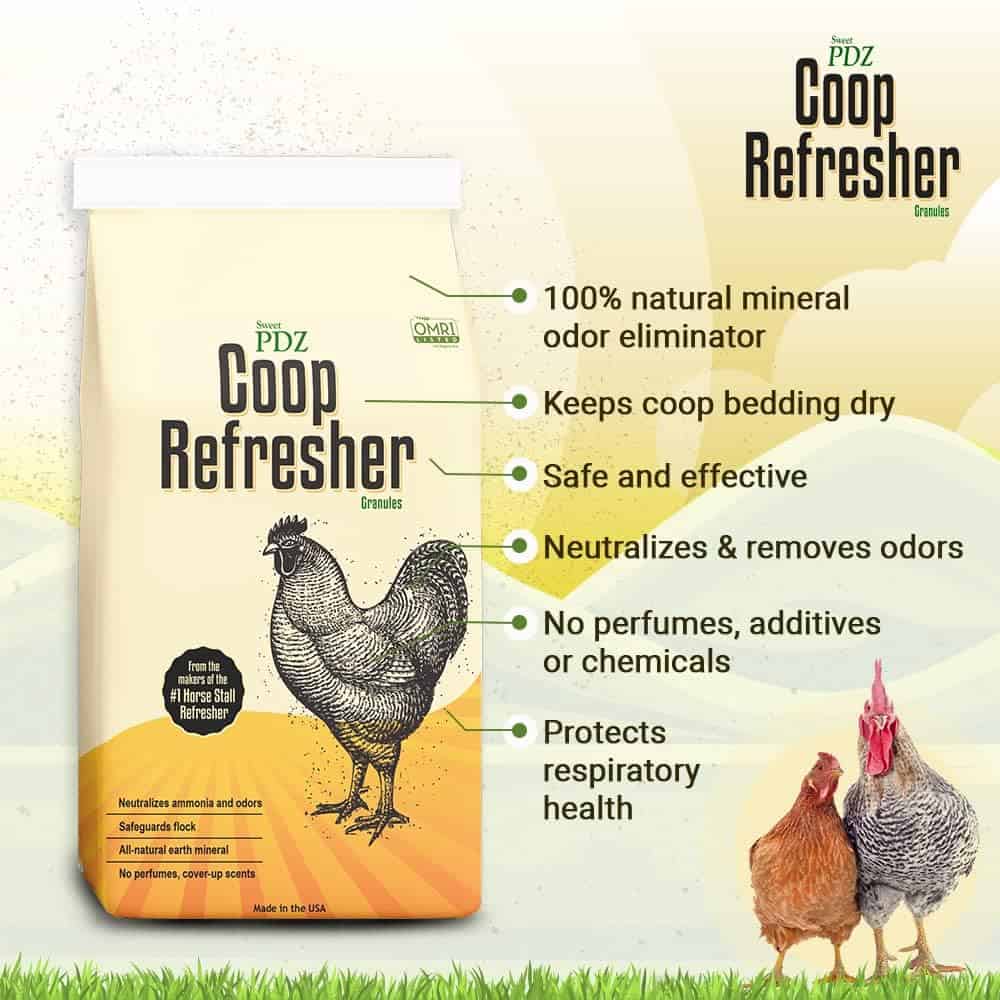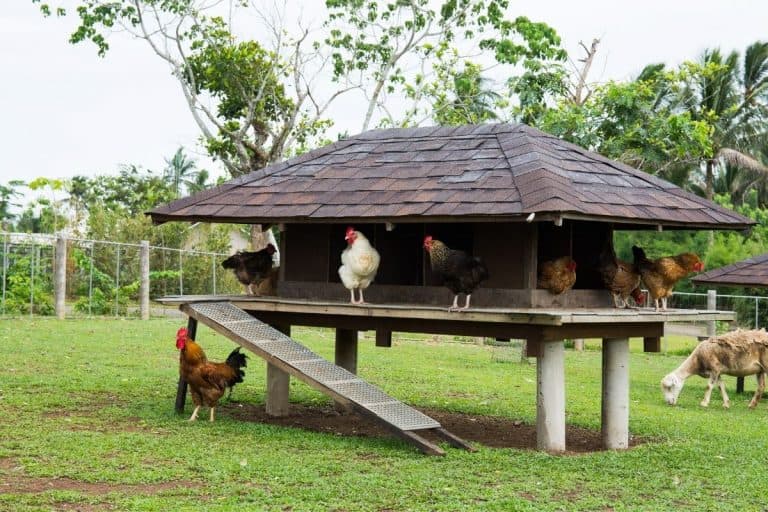11 Essentials You Need To Install In Your Chicken Coop
Like humans, chickens prefer a pleasant and comfortable place to live and spend their time. The chicken coop should be outfitted with all the essentials and accessories so that the chickens can have a happy life.
In general, a chicken coop should have the necessities, such as comfortable nesting areas for hens, perching areas, feeders, and drinkers. The chicken coop can be equipped with thermometers, and lights, to gain maximum control over its environment.
Since chickens provide us with fresh eggs and various other resources, it is the responsibility of the owners to provide chickens with a comfortable place to live. If you’re building a chicken coop, read on to learn what essentials you must install.
A chicken coop should have several essentials installed, some of which are considered necessary while others are optional. Chickens will spend the majority of their time in their coop, particularly if they are kept in an area with limited outdoor space, so their coop should be equipped with everything they need. The following is a list of essentials you should install in your chicken coop.
Hey chicken buddies: Quick heads-up before going further! I've put together a list of stuff I use and love for my flock. If you're curious about what keeps my hens happy, click here to find out.
Nests
The nest is one of the areas in a chicken coop where chickens will spend most of their time, particularly hens since they will be laying eggs in their nest. Although hens will lay eggs in their preferred locations if nests are not available, egg collection will become a time-consuming task for you.
The nest should be constructed from comfy material, such as straw, and should be the right size for your chickens, as big hens will need a big nest to lay eggs in comfort. While roosters in the coop don’t require a nest or nesting box, you should ideally provide a nest for each hen.
You can find nest box on Amazon, and even buy nest box pads if you don’t have access to straw at home.
Wait, I have some recommendations for you!
Before you go any further, I want you to take a look at some of the recommendations I've handpicked for you. I think these are essential items you should have for your chickens flock. You can check them out and buy them directly from Amazon.
 |  |  |  |
| Essential accessory for your coop | No more tripping over hoses! | Predator protection made easy | Comfort + style is possible |
Feeders
One of the crucial components that must be installed in a chicken coop is a feeder. Although there are many different types of feeders, a feeding trough or a traditional poultry feeder is generally installed in a chicken coop.

When installing a feeder, it’s important to keep in mind that it shouldn’t be below the perching bar or perching area because chickens will defecate in it. It should also be elevated off the ground so that no bedding material can mix with the feed and so that chickens can easily eat from it (this one will do the trick for example).
Check my other articles on the topic if you want to learn more about this essential element in your coop:
Drinkers
Drinkers are essential and must be present in a chicken coop because chickens require plenty of fresh water to digest their food and perform normal body functions. In most chicken coops, a fountain drinker, poultry waterer, or nipple system is installed.
Since the amount of sunlight that enters the chicken coop is limited, it is important to install a non-spill and non-drip drinker or waterer because this will prevent water from spilling on the floor and will prevent fungal growth.
Wet litter and bedding can also contribute to diseases in poultry such as coccidiosis. Make sure there are no water spills on the floor and clean the drinkers every one to two weeks.
Perches
The next most crucial components to install in a chicken coop after feeders and drinkers are perches. Perching is a critical element of a chicken’s behavior, and it also helps to reduce limb problems in chickens. Perching also promotes mobility and increases locomotion in chickens.
Since steel or plastic pipes or rods don’t offer chickens a good grip, perches should be made out of large, straight tree branches or wooden bars. The perches should be installed higher than the nests or nesting boxes because chickens prefer a high perching spot, and they should be strong enough to support the weight of all the chickens at once.
Furthermore, perches provide a good place for chickens to sleep because chickens, particularly roosters, prefer to sleep on raised platforms.
Litter trays
Also referred to as dropping trays, dropping pans, or pooping boards these are important components to be installed in a chicken coop.
Litter trays are a great way to collect chicken droppings, which can be turned into an excellent plant fertilizer. Cleaning the litter trays is also easier than cleaning the coop floor because you don’t have to remove the bedding, which can be a tedious task.
Chickens have a short and active digestive tract, which means they produce a lot of poop more frequently, usually every 30 minutes to an hour, and they also defecate while asleep, making litter trays essential for the chicken coop.
Insulation
Although some experts may regard chickens as hardy creatures, they can be sensitive to environmental temperatures, especially when they are young. The chicken coop should be well insulated to minimize temperature fluctuations, especially during the winter months.

While temperature fluctuations may not directly harm the chickens, they do put them under environmental stress, disturbing their immunity and making them more susceptible to diseases and infections. Therefore, give your chickens a well-insulated chicken coop to keep them healthy.
Styrofoam, foam boards, or another type of insulation material must be installed in the walls and ceiling of the chicken coop while construction. Some chicken owners overlook this vital component, but I urge you not to.
Raised floor
In my opinion, the floor of the chicken coop should always be elevated above the ground. This not only adds an extra layer of insulation, but also prolongs the lifespan of the floor.
Raising the floor of the chicken coop also aids in keeping the bedding dry and deters predators and rodents from entering. In the summer, raised floors are beneficial because they encourage airflow. Concrete pillars or wooden beams can be used to raise the coop’s floor.
Vents
Given how crucially important good ventilation is to the health of chickens, vents must be installed in chicken coops. The air quality in the chicken coop is one of the key concerns because it can be compromised by ammonia in the atmosphere.
Since chickens produce a lot of excrement, the air in the coop may become contaminated with ammonia, harming the respiratory system of the chickens and making breathing difficult for them.
Vents should be placed in such a way so that fresh air can circulate without drastically changing the temperature in the chicken coop. Ideally, vents should be installed near the roof of the coop. The number of vents needed in the chicken coop is determined by its size.
For larger coop, you can even find solar-powered vents (like this kit on Amazon). But in most cases, a cheaper solution like this one in one corner should be enough.
Lights
Lights are not mandatory, although they can be installed if natural light is scarce in the chicken coop. If you’re going to install a light, yellow soft light is advised rather than white. In addition to encouraging egg production, light also influences the hormones in the body of a chicken.
If your chicken coop has no windows to let natural light in or if your chickens spend most of their time inside the coop, lights can be installed. For locations with less daylight, particularly in the Northern Hemisphere during the winter, a chicken coop light is required.

However, exercise caution when using artificial lighting in the chicken coop, as this could also throw off the natural cycle of egg production.
As for the vent, you can find cheap solar-powered lighting on Amazon. If your coop doesn’t have electricity, it’s a great alternative (even if you just use it to gather eggs :-)).
Related article: Are Chickens Scared Of The Dark? (+ what to do about it)
Thermometer and hygrometer
Although it is not required, a thermometer can be installed in a chicken coop. It will provide you with an estimate of the coop’s overall temperature, so you can ensure that it is comfortable for the chickens. If you are concerned with how everything looks, a thermometer can also give the chicken coop an aesthetic look.
A hygrometer can also be installed in the chicken coop to determine the level of humidity, which has a significant impact on the health of the chickens. Humidity fluctuations can lead to numerous skin issues in chickens and also encourage infections.
The litter and bedding in the chicken coop will remain damp if the relative humidity is too high, which will encourage the development of parasites and contagious microorganisms like coccidia. Since airflow can alter the readings, the hygrometer should be placed away from the entrance and air vents of the coop.
Personally, I have this smart thermometer from Xiaomi. It doesn’t need electricity or Wi-Fi, but I can synchronize it with my phone to get the history of the temperature and humidity. It’s nice because you don’t need to wake up at 3AM to check if the coop is too cold :-).
Dust bath box
Taking a dust bath is part of a chicken’s daily routine and is also necessary for their health because dust baths aid in the removal of parasites from their body. Taking a dust bath can help control the excessive oily secretions that chickens produce to groom their feathers.
Installing a dust bath box in your chicken coop is necessary if you don’t allow your chickens to go outside frequently or if you live in a small space where they don’t have enough room to move around.
Hard cardboard can be used to construct a dust bath box, or wooden planks can be used to build one. To prevent dust from contaminating the feed and water, place the dust bath box in a corner of the chicken coop far from the feeders and drinkers.
You should fill the box with dust, and you can also add diatomite and minerals to the dust. Install multiple dust bath boxes in the coop if there are lots of chickens so they can all easily access it.
Now that you have everything ready in your coop, you can start reading my other articles to start your adventure and raise chickens at home:
- How Many Chickens For a Dozen Weekly Eggs? (+Tips to improve)
- How Often Should You Clean Out A Chicken Coop?
- How Many Chickens Should a Beginner Start With?
- How to Keep a Chicken Coop from Smelling (Tips and tricks)







